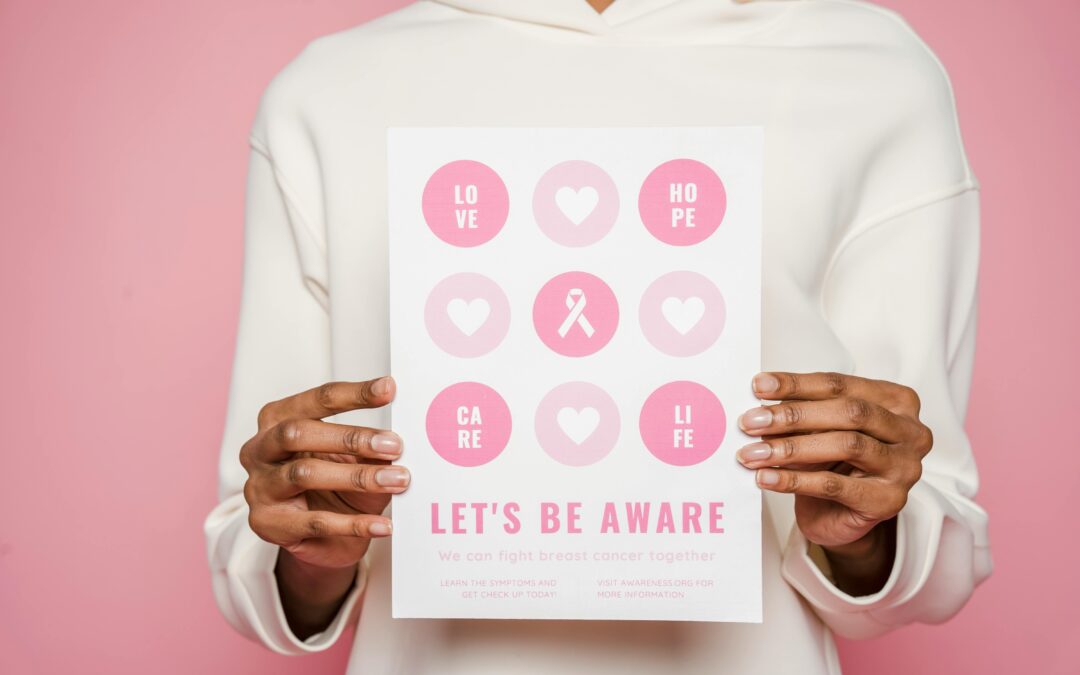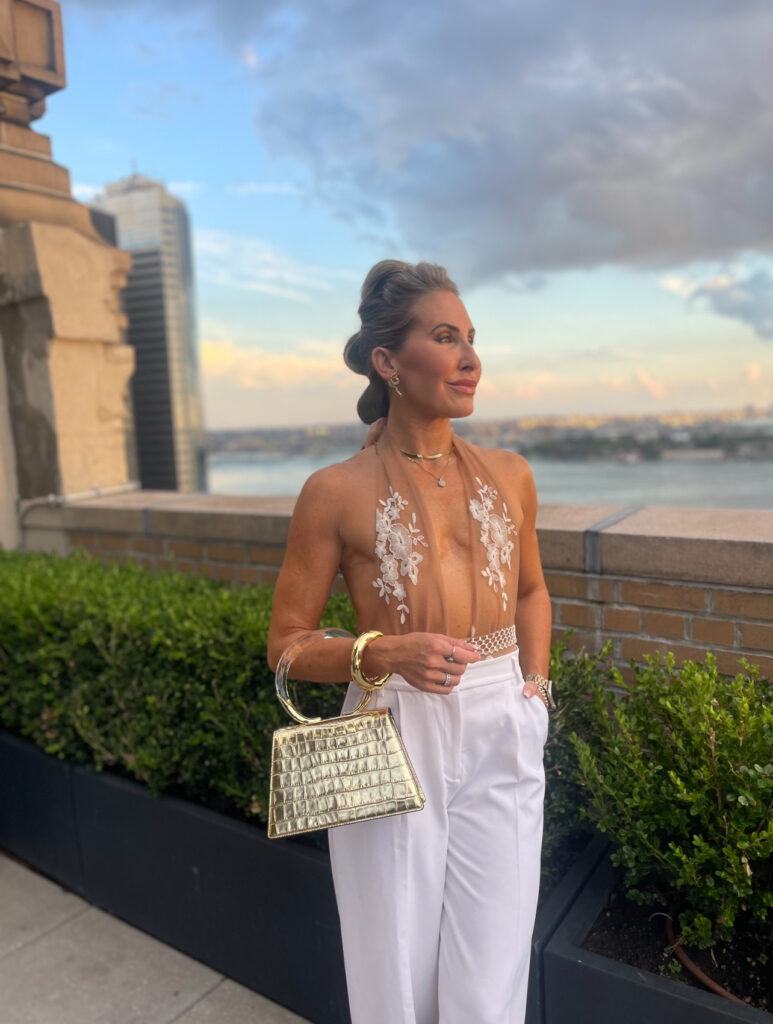It wasn’t until after my breast cancer diagnosis at age 38 that I learned these preventative measures women can take to reduce their risks of breast cancer. Unfortunately, this information isn’t readily available to us as a handout.
At the time of my diagnosis, I considered myself to be overall a very healthy person. However, our modern-day existence is ultimately surrounded by toxicity to the foods that we consume to the phones we hold in our hands. Breast cancer doesn’t just occur from one thing, it can be multiple things that contribute to built-up toxins in our bodies that cause our system to go haywire. From my personal experience and what I’ve learned, my best advice lies within these six tips. In addition to these tips, I would also like to mention the importance of eating organic and washing the pesticides off the foods that you consume.
“Chemicals can trigger cancer in a variety of ways, including disrupting hormones, damaging DNA, inflaming tissues, and turning genes on or off. Many pesticides are “known or probable” carcinogens and, as the President’s Panel notes, exposure to these chemicals is widespread,” according to Pesticide Action Network.
I can’t stress this enough, ladies! Feel your boobies and enjoy it. I no longer have boobs because I chose to do a double mastectomy with an aesthetic flat closure, but I always enjoyed fondling my breasts (weird, I know right?). I honestly attribute this fact as a blessing in finding my lump so early. My lump was a small pea-sized bump on my right breast just a little below the areola. I swear it felt like it appeared within a week, which is why I recommend doing bi-monthly self-breast exams.Â
When I found out I had cancer, they immediately did a multigene panel test on me which tests for 100 gene mutations. Rare enough, I had zero gene mutations. The genes most commonly affected in hereditary breast and ovarian cancer are the breast cancer 1 (BRCA1) and breast cancer 2 (BRCA2) genes. About 3% of breast cancers (about 7,500 women per year) and 10% of ovarian cancers (about 2,000 women per year) result from inherited mutations in the BRCA1 and BRCA2 genes, according to the CDC.
“A study from 2017Trusted Source asked hundreds of women how often they used antiperspirants and for how long. The group with breast cancer self-reported that they used antiperspirants several times a day, beginning before the age of 30 years old.
The group of women without breast cancer self-reported that they used antiperspirants less often. Both groups had aluminum salts in their breast tissue. But the women who had breast cancer in the upper outer quadrant and used aluminum products more frequently had higher levels of aluminum in their breast tissue than women without cancer, according to Healthline.
I unfortunately did use antiperspirant deodorants several times a day due to working out frequently. I now only use Native deodorant, which is all natural and aluminum free.
During my three years as a breast cancer survivor, I have learned the importance of knowing your hormone levels and any vitamin deficiencies. My cancer was stage 1 invasive ductal carcinoma estrogen and progesterone driven, which means I had an abundant amount of these two hormones in my system for a period of time. Had I known about my hormone levels I would have been able to make some lifestyle changes to bring them down. I still to this day do not know what my hormone levels were before cancer.
Honestly, I know this might be bad to suggest, but if you want a lump to be biospsied and not routinely checked by just mammograms then I highly suggest you mention a family member having breast cancer. It makes a world of difference in initial testing. For example, I remember my paternal grandmother having breast cancer, yet my sister did not because she was away at law school. When she found a lump they decided to routinely check it every six months with a mammogram for any changes. Whereas, I remembered our grandmother having breast cancer and when I found my lump I went in for a biopsy immediately after my mammogram. And thank God I did, because the mammogram didn’t show anything and even my initial breast surgeon said ” It looks benign” while performing the biopsy. Obviously, she was wrong.
I believe stress to be the silent killer and kickstarter for all diseases. Stress imbalances the body and causes us to take on certain bad habits, such as drinking alcohol, to relieve us from our daily stressors. I will be the first to admit that I probably consumed more alcohol than what was needed at times, which also contributed to my increased hormone levels. My apartment was right in the heart of the city with an accessible restaurant below and it had a nice bar. It was easy to hop on the elevator and go down to the first floor as something to do. At the time I didn’t really think about what I was doing to my body, I just thought your liver took care of the alcohol (like a dumbass) because I had witnessed so many other professionals drinking a lot more than me and they seemed fine. They still had their sh*t together. I had zero awareness about the risks I was placing on my body by my consumption of alcohol, no one really tells you that.
“Despite variability in defining light, moderate and heavy alcohol intake, studies have found a consistent modest association between higher alcohol intake and increased breast cancer risk (reviewed in [1–3]. A meta-analysis of 53 studies reported that compared with women who abstained from alcohol consumption, the relative risk of breast cancer increased by 32% (95% CI 1.19-1.45) for those with intake of 35-44 g/day (approximately 3-4 drinks per day), and by 46% (95% CI 1.33-1.61) for ≥45 g/day of alcohol use (approximately more than 4 drinks per day) [10]. Overall, the relative risk of breast cancer is increased by 7% for each additional 10 grams of alcohol consumed per day [10]. More recently, a summary of data for lighter drinking supported that even in women who drink ≤12.5 g/day (≤1 drink/day) there was a 5% increase in risk of breast cancer compared to non-drinkers (95% CI 1.02-1.08) [1], according to the National Library of Medicine.
I know that not everyone wants to hear this information, because drinking in our society is almost second nature. But I truly do believe as more research comes out and more warning labels are mandated, in 20 years from now, we will look back on alcohol like we do cigarettes.
The Dietary Guidelines for Americans recently updated moderate drinking as:
- men: two drinks or less in a day
- women: one drink or less in a day
My hope is for women to stumble upon this article before a diagnosis and make the necessary adjustments to avoid increasing their risks for breast cancer. One in 8 women will be diagnosed this year. Please take the necessary precautions to protect yourself.
Until next time, stay well.
xx
Erica Deligne
Join me in my daily life by following me on Instagram @delightfully_deligne









